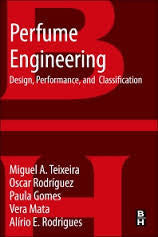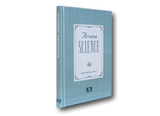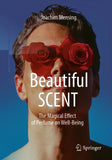Perfume Engineering : Design , Classification and Performance By Teixiera
Perfume Engineering :
Design, Performance & Classification
Design, Performance & Classification
Author(s) : Teixeira & Rodriguez & Gomes & Mata & Rodrigues
Pages: 170 Dimensions: 229 X 152
Pages: 170 Dimensions: 229 X 152
Discover the secrets behind fragrance formulation and evaluation of fragrance performance!
Description :
Perfume Engineering is a must-have reference for engineers who design any products that require fragrances, such as perfumes, cosmetics, healthcare and cleaning products.
Perfume Engineering is a must-have reference for engineers who design any products that require fragrances, such as perfumes, cosmetics, healthcare and cleaning products.
This book provides the reader with practical guidance on perfume design, performance and classification, from its beginnings as a liquid mixture to the vapour phase, by way of odorant dispersion and olfactory perception. It does this through the application of development and validation models to account for fragrance evaporation, propagation and perception.Readership
Chemical engineers working in the flavour and fragrance market
Table of Contents:
Preface;
1 A Product Engineering Approach in the Perfume Industry;
1.1 The Flavor and Fragrance Market;
1.2 From the Idea to Market: Product Engineering; References;
2 Design of Perfumes;
2.1 The Perfumery Ternary Diagram;
2.1.1 Odor Intensity Model;
2.1.2 Vapor-Liquid Equilibrium;
2.1.3 Odor Quality Model;
2.1.4 Construction of the PTD®;
2.1.5 The Relevance of the Activity Coefficient;
2.2 Application of the PTD® Methodology: Effect of Base Notes;
2.2.1 Experimental Validation of the PTD®
2.3 The Perfumery Quaternary-Quinary Diagram (PQ2D®)
2.3.1 Application of the PQ2D® Methodology;
2.3.2 Application of the PQ2D® to Perfumery Quinary Systems;
2.3.2.1 Effect of the Base Note on Perfume Formulation;
2.3.2.2 Effect of Water on Perfume Formulation;
2.4 Perfumery Octonary System;
2.5 Conclusion; References;
3 Performance of Perfumes;
3.1 Fragrance Performance;
3.2 The Relevance of the Selection of Fragrance Ingredients;
3.3 Evaporation of Fragrance Chemicals;
3.4 Diffusion of Fragrances;
3.4.1 Perfume Diffusion Model;
3.4.1.1 Gas Phase;
3.4.1.2 Liquid Phase.
3.4.2 Performance of Quaternary Fragrance Mixtures
3.4.3 Performance of Quinary Fragrance Mixtures;
3.4.4 Evaluation of Commercial Perfumes;
3.5 Conclusion; References;
4 Classification of Perfumes-Perfumery Radar;
4.1 The Perception of Odors;
4.1.1 Classification of Odors;
4.2 Classification of Perfumes;
4.3 The Perfumery Radar (PR) Methodology;
4.4 Applications of the PR Methodology;
4.4.1 Essential Oils;
4.4.2 Commercial Perfumes;
4.4.2.1 Feminine Fragrances;
4.4.2.2 Unisex Fragrances;
4.4.3 Evaluation of Odor Intensities of Similar Perfumes.
4.5 Experimental Validation of the PR Methodology
4.6 Evolution of the PR with Evaporation and Diffusion;
4.7 Final Considerations on the PR Methodology;
4.8 Conclusion; References;
5 Looking Ahead;
5.1 Unraveling the Sense of Olfaction;
5.2 The Role of Perfume Engineering;
5.3 Fragrance Performance: Different Routes;
5.4 Fragrance Stability;
5.5 Integrative Approach for Product Development: The Role of Microeconomics and Planning Strategies;
References.
X
1.1 The Flavor and Fragrance Market;
1.2 From the Idea to Market: Product Engineering; References;
2 Design of Perfumes;
2.1 The Perfumery Ternary Diagram;
2.1.1 Odor Intensity Model;
2.1.2 Vapor-Liquid Equilibrium;
2.1.3 Odor Quality Model;
2.1.4 Construction of the PTD®;
2.1.5 The Relevance of the Activity Coefficient;
2.2 Application of the PTD® Methodology: Effect of Base Notes;
2.2.1 Experimental Validation of the PTD®
2.3 The Perfumery Quaternary-Quinary Diagram (PQ2D®)
2.3.1 Application of the PQ2D® Methodology;
2.3.2 Application of the PQ2D® to Perfumery Quinary Systems;
2.3.2.1 Effect of the Base Note on Perfume Formulation;
2.3.2.2 Effect of Water on Perfume Formulation;
2.4 Perfumery Octonary System;
2.5 Conclusion; References;
3 Performance of Perfumes;
3.1 Fragrance Performance;
3.2 The Relevance of the Selection of Fragrance Ingredients;
3.3 Evaporation of Fragrance Chemicals;
3.4 Diffusion of Fragrances;
3.4.1 Perfume Diffusion Model;
3.4.2 Performance of Quaternary Fragrance Mixtures
3.4.3 Performance of Quinary Fragrance Mixtures;
3.4.4 Evaluation of Commercial Perfumes;
3.5 Conclusion; References;
4 Classification of Perfumes-Perfumery Radar;
4.1 The Perception of Odors;
4.1.1 Classification of Odors;
4.2 Classification of Perfumes;
4.3 The Perfumery Radar (PR) Methodology;
4.4 Applications of the PR Methodology;
4.4.1 Essential Oils;
4.4.2 Commercial Perfumes;
4.4.3 Evaluation of Odor Intensities of Similar Perfumes.
4.5 Experimental Validation of the PR Methodology
4.6 Evolution of the PR with Evaporation and Diffusion;
4.7 Final Considerations on the PR Methodology;
4.8 Conclusion; References;
5 Looking Ahead;
5.1 Unraveling the Sense of Olfaction;
5.2 The Role of Perfume Engineering;
5.3 Fragrance Performance: Different Routes;
5.4 Fragrance Stability;
5.5 Integrative Approach for Product Development: The Role of Microeconomics and Planning Strategies;
References.


















